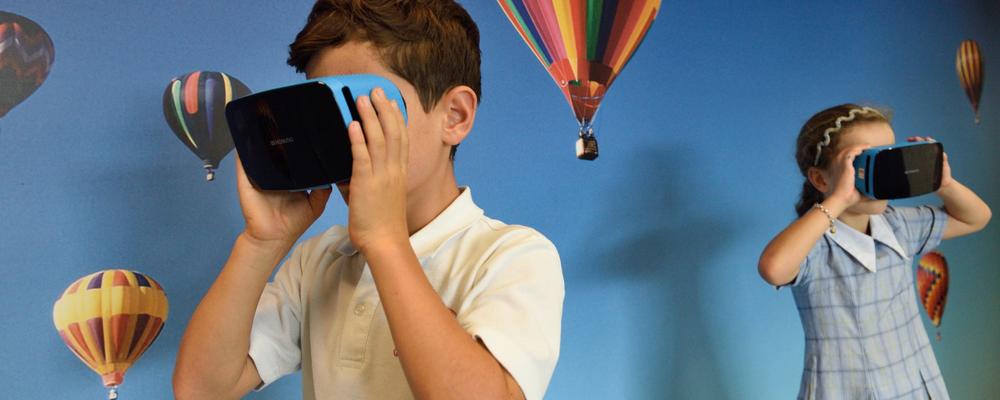
Therapy in the virtual world: a view on social interaction and new technologies
Martyna Galazka-Carney's and Max Thorsson's latest blog entry
[Posted on 17 March, 2021, by Martyna Galazka-Carney & Max Thorsson]
For those of us who are not familiar with virtual games, Second Life is an online virtual world that launched in 2003 and currently has close to one million active users worldwide. Unlike video games in general, in Second Life, there is no manufactured conflict or set objective, except to quite simply live everyday life. Each active user creates an avatar who works, shops, goes for walks etc., and does all the things one normally does in reality, but with significant benefits. First, your avatar can look and act any way you want. Second, your job can be whatever you like – ever wanted to care for wild animals for a living? Well, now you can, without going through all the bothersome education, training and occupational risk. Finally, you can interact with others on your own terms, forming relationships as casual as quick chats in the supermarket and as serious as marriage (between avatars, of course). In the world where physical distance is a non-issue, you can search and find like-minded people, approach them, and start conversations with them on the topic of interest to you both. When you are done, or when things get uncomfortable, you are but one click away from ending the interaction without any detrimental consequences. For people who find real-life social interactions nearly impossible, such as those with autism, severe social phobia, or other ESSENCE disorders, these types of synthetic interactions are at times ideal.
Because of these reasons, there’s been a growing interest in using VR platforms to help individuals with autism and intellectual disability to perform daily-life activities such as safely crossing the street (Science Daily, 2008)
In addition to providing entertainment and social life to those who find face-to-face interactions extremely stressful, there’s been a growing interest in using virtual reality (VR) for therapeutic and educational purposes. There are many reasons for this. First, VR can simulate a wide variety of settings or virtual environments (VEs), such as a busy cafe, a bus or a quiet room void of any distracting or confusing stimuli. Second, within VEs, time can easily be manipulated, allowing the participant to pause and receive feedback that is immediately contingent on their actions. At least in theory, behaviors and responses can be practiced and extended in a context that is just like the real world, offering potential for these behaviors to then generalize to the real world, outside the game. Finally, each VR session can be set up so that it is fun and motivating, allowing the participants to learn as they play (Vera et al., 2007).

Because of these reasons, there’s been a growing interest in using VR platforms to help individuals with autism and intellectual disability to perform daily-life activities such as safely crossing the street (Science Daily, 2008). Some have also used VR to facilitate the understanding of certain social conventions, such as not walking between people on the sidewalk or keeping appropriate distance from others (Parsons et al., 2006). Still others have attempted to use VR to create photo-realistic and controllable stimuli that target difficulties in social and emotional understanding, symbolism and imagination (Herrera et al., 2008). For example, one study used highly sophisticated and realistic facial expressions to explore gaze behavior in children with ASD (Trepagnier, Sebrechts, and Peterson, 2002), and help children with ASD to extract important information from faces (Trepagnier et al., 2005; Moore et al., 2005). The results, however, are still somewhat questionable, and are largely based on a small number of individual cases (for a more comprehensive review, see Parsons et al., 2009). The most notable finding, however, seems to be that for some young children with autism, using VR technology (such as using the immersive and rather heavy headgear) is problematic, with some reporting instances of ‘cyber-sickness’ rendering the whole enterprise moot.
Reading these developments, especially at a time when almost all of our social interactions are reduced to screen time, one cannot help but wonder “what’s next?”. Images of a dystopian future with people wearing VR headgear in abandoned apartment buildings come to mind. But the persistent question for us, as researchers, is not so much whether social interaction will someday be replaced by manipulated avatars, but rather, whether that is even possible.
Our still limited knowledge leads us to believe that what makes authentic interactions difficult is not only what is seen, but also, what can be sensed, felt, and experienced.
On the surface, social interactions can be as simple as an instance of non-verbal communication - a quick glance - and as complex as a public debate where ideas and opinions are shared in more or less elaborate ways. But an interaction is much more than information exchange. Social interaction between two people is a delicate dance of shared intention, and series of asymmetric but complementary actions (Hasson and Frith, 2016). Our sensitivity to biological motion, more than any other type of movement, is hard-wired into our brain (Johansson, 1973) and our tendency to adjust our movements, posture and gaze with our interacting partners occurs almost automatically. Physiologically, our heart rate and skin conductance levels, synchronize with others (Behrens et al., 2020). Recent findings have also started to reveal the neurological underpinnings of social cognitive functions, including interbrain synchrony, a temporally and spatially symmetric brain activation (Hoehl et al., 2021). Given that, two notable limitations come to mind when it comes to VR. The first is the question of generalizability and the second concerns validity. Can a skill learned in VR generalize to real life? And, related to the first, can we create a virtual interaction that truly mimics an authentic one, without first knowing what makes an interaction authentic in the first place?
Indeed, an authentic interaction is just as complex as humans themselves: it is a pulsing, hormonally-regulated, conscious and sometimes unconscious, social being. It is no wonder that for some it may feel like juggling ten ping pong balls while unicycling, while being dazzled by the sun. As our illustration of Second Life and VR, shows, with the growing sophistication of computer graphics and mimicry of natural human behavior, technology could come very close to imitating authentic social interactions. Even one’s body movements could translate into the virtual world with the use of accelerometers and gyroscopes. But if the critical component of an interaction requires a more sophisticated physical component, will synthetic interactions ever measure up?

Our still limited knowledge leads us to believe that what makes authentic interactions difficult is not only what is seen, but also, what can be sensed, felt, and experienced. With that, while Second Life tends to be more manageable to some, taking a step to use VR for neurorehabilitation may be a huge leap of faith. Without knowing what social interaction truly means on a neurological, physiological and behavioral level, it may be impossible to create a platform that will teach these finite aspects of social interaction that can generalize to real life. Perhaps VR is not meant to replace face-to-face interaction, but rather as an opportunity to study interaction, and eventually, as a potent compliment to traditional face-to-face therapy.
[This is a blog. The purpose of the blog is to provide information and raise awareness concerning important issues. All views and opinions expressed are those of the writer and not necessarily shared by the GNC.]

